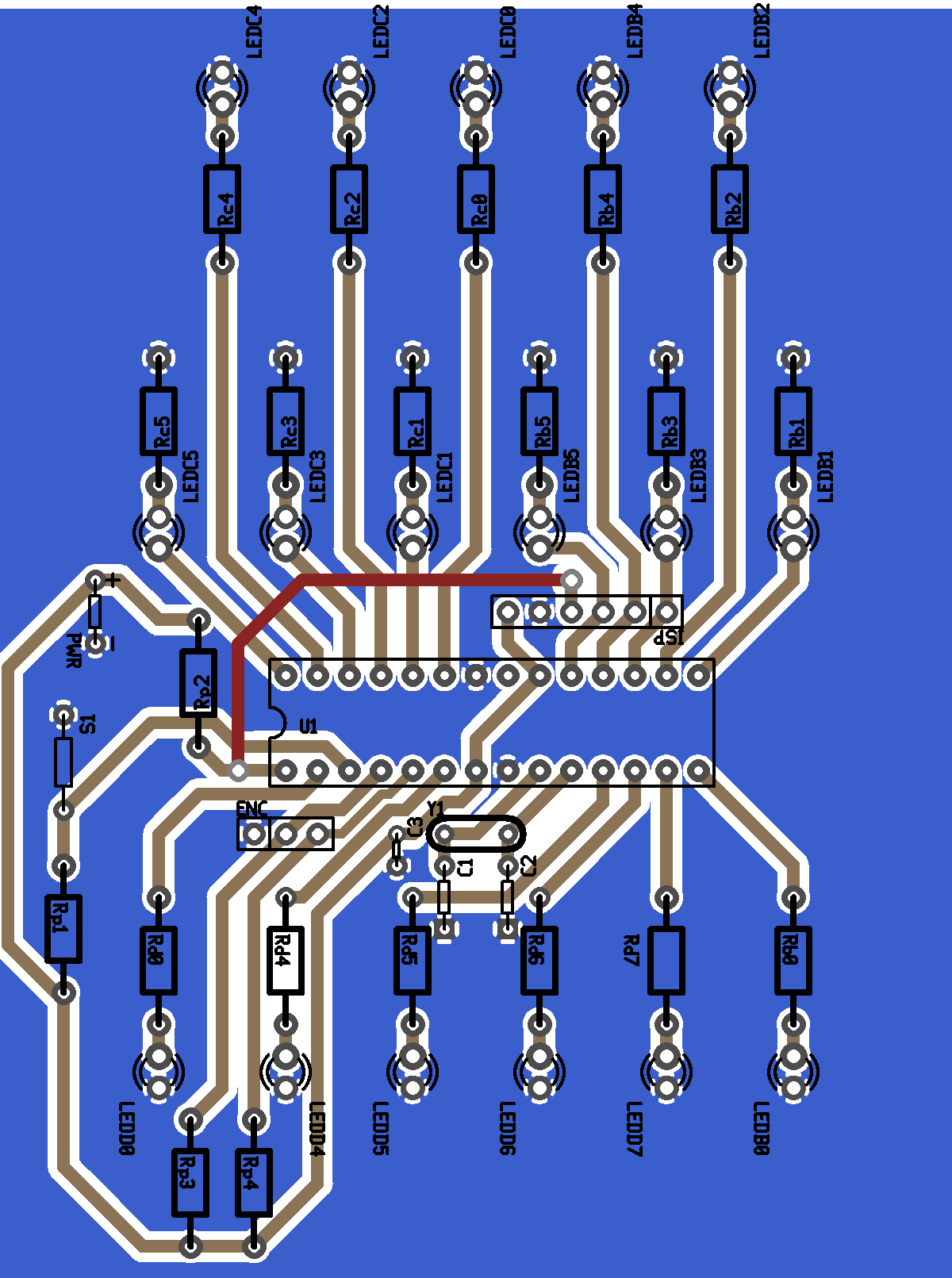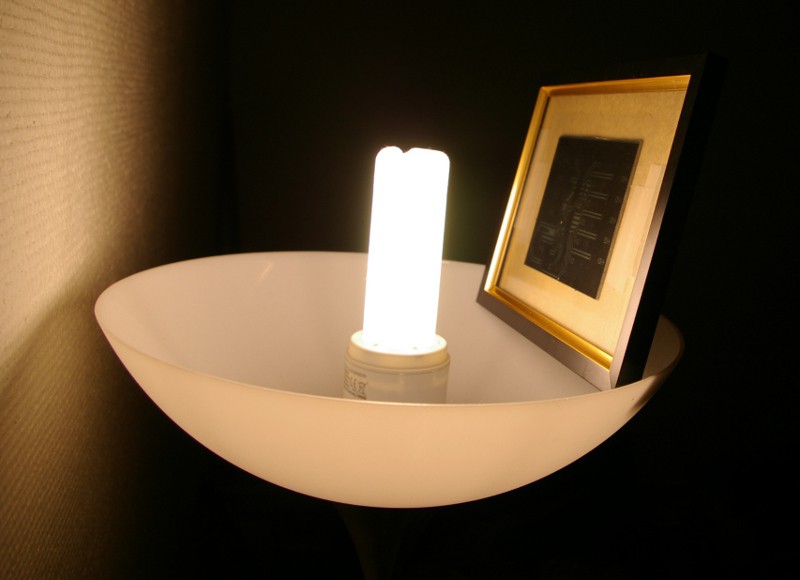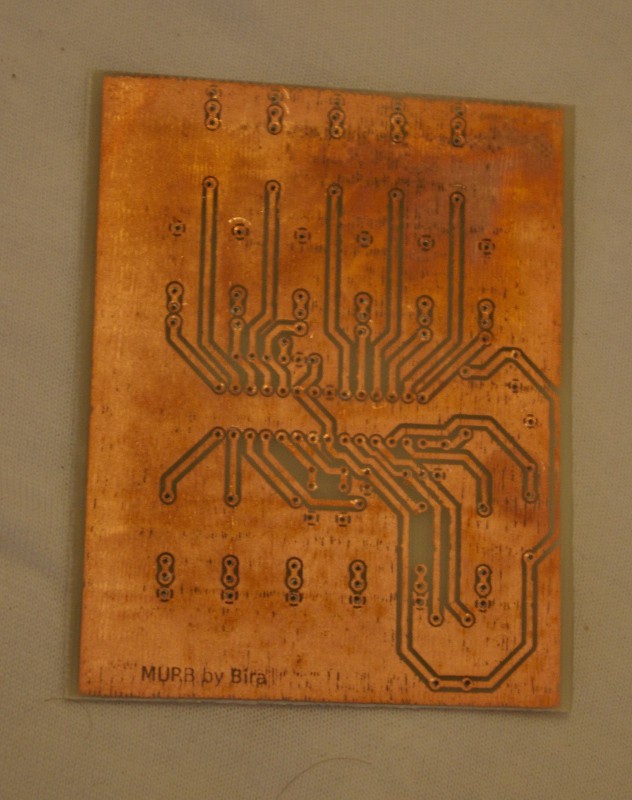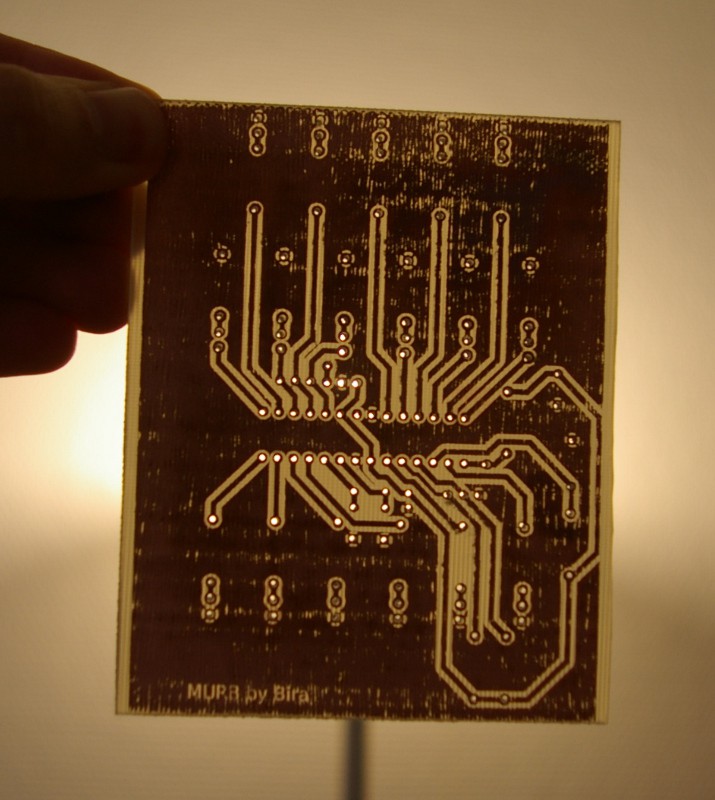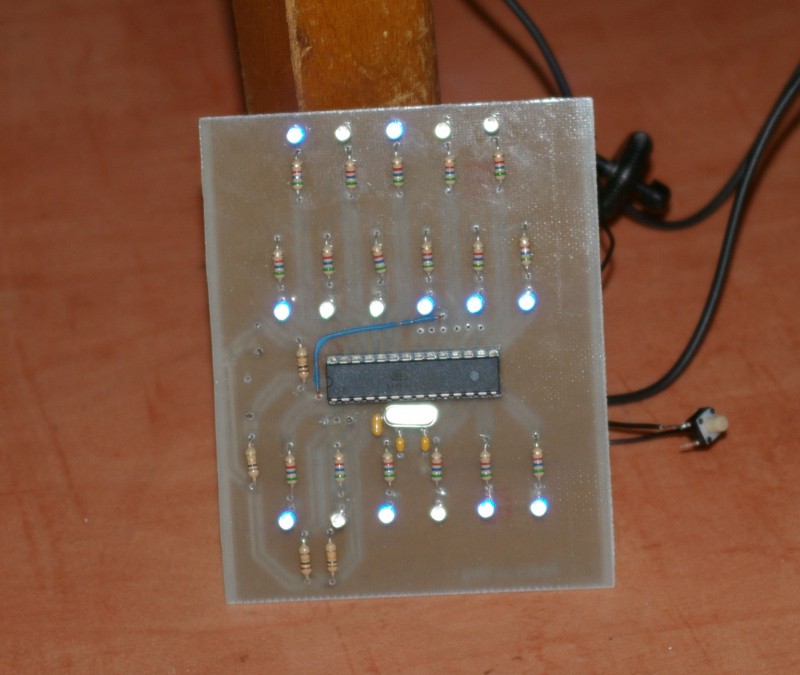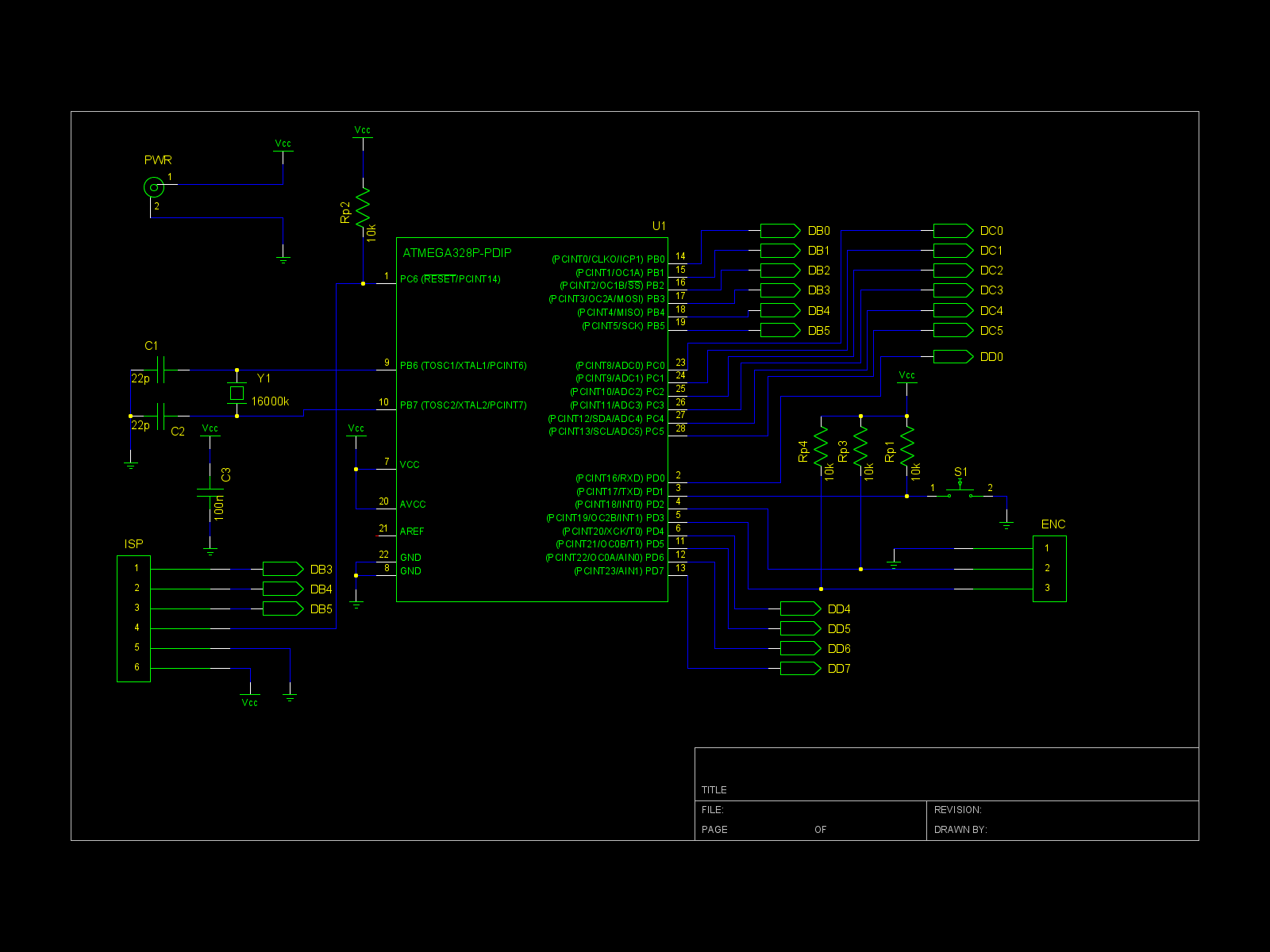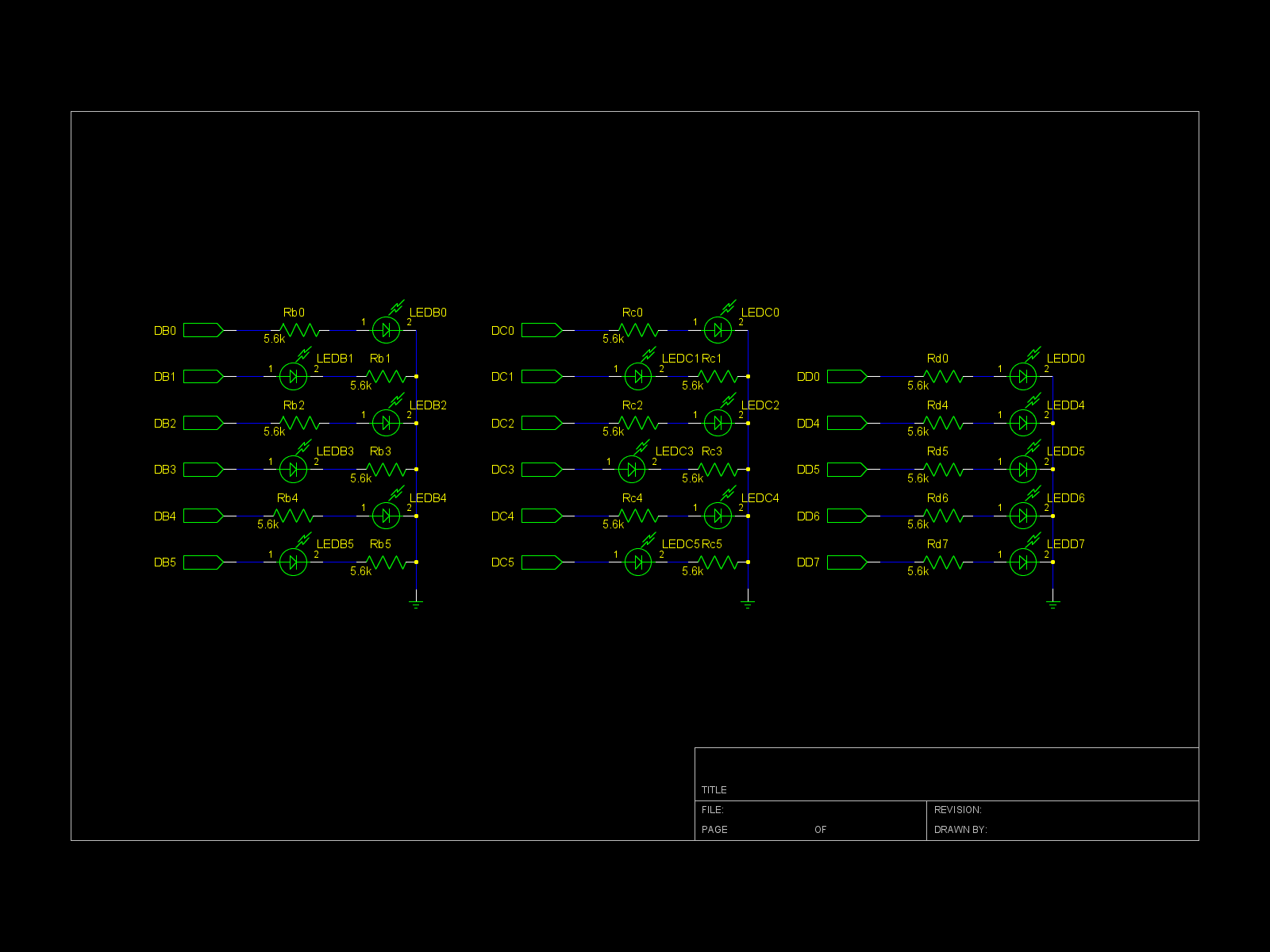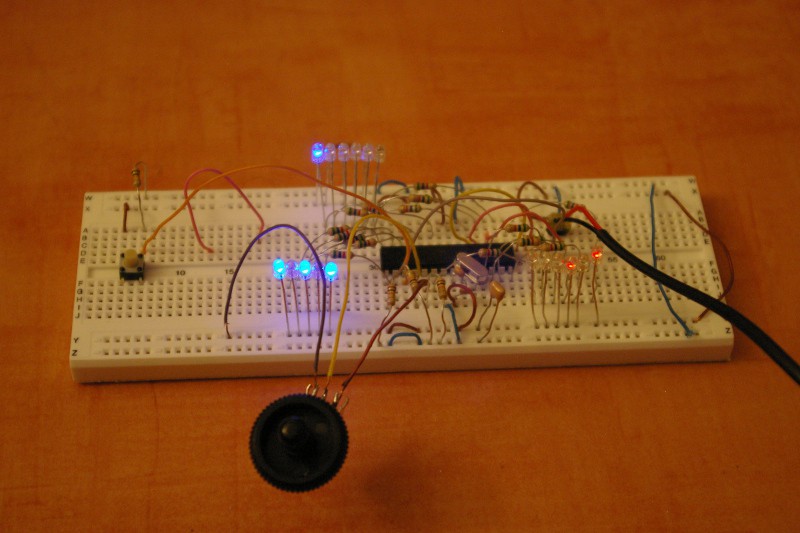MURB is based on an ATmega328P. The time is shown by three binary numbers, hours on top, minutes in middle and seconds on bottom. Each number is a row of 5 or six LEDs, with most significant bit to the left.
For interface, it has a push-button and a rotary encoder. It is powered via an USB plug.
When first powered, MURB enters in time setup mode, with the minutes blinking. The user can then enter the minutes with the encoder. The value is saved with a push on the button. The next state has the hours blinking and the user can again enter the desired value. When the user validates the hour, MURB goes on to the normal state. Here the present time is show up to the seconds. In normal state, the rotary encoder controls the brightness of the LEDs. A long push on the button brings back the time setup mode.
I had a lot of fun building it. And I liked so much the result that I build another one for me.
